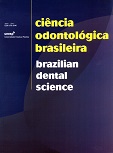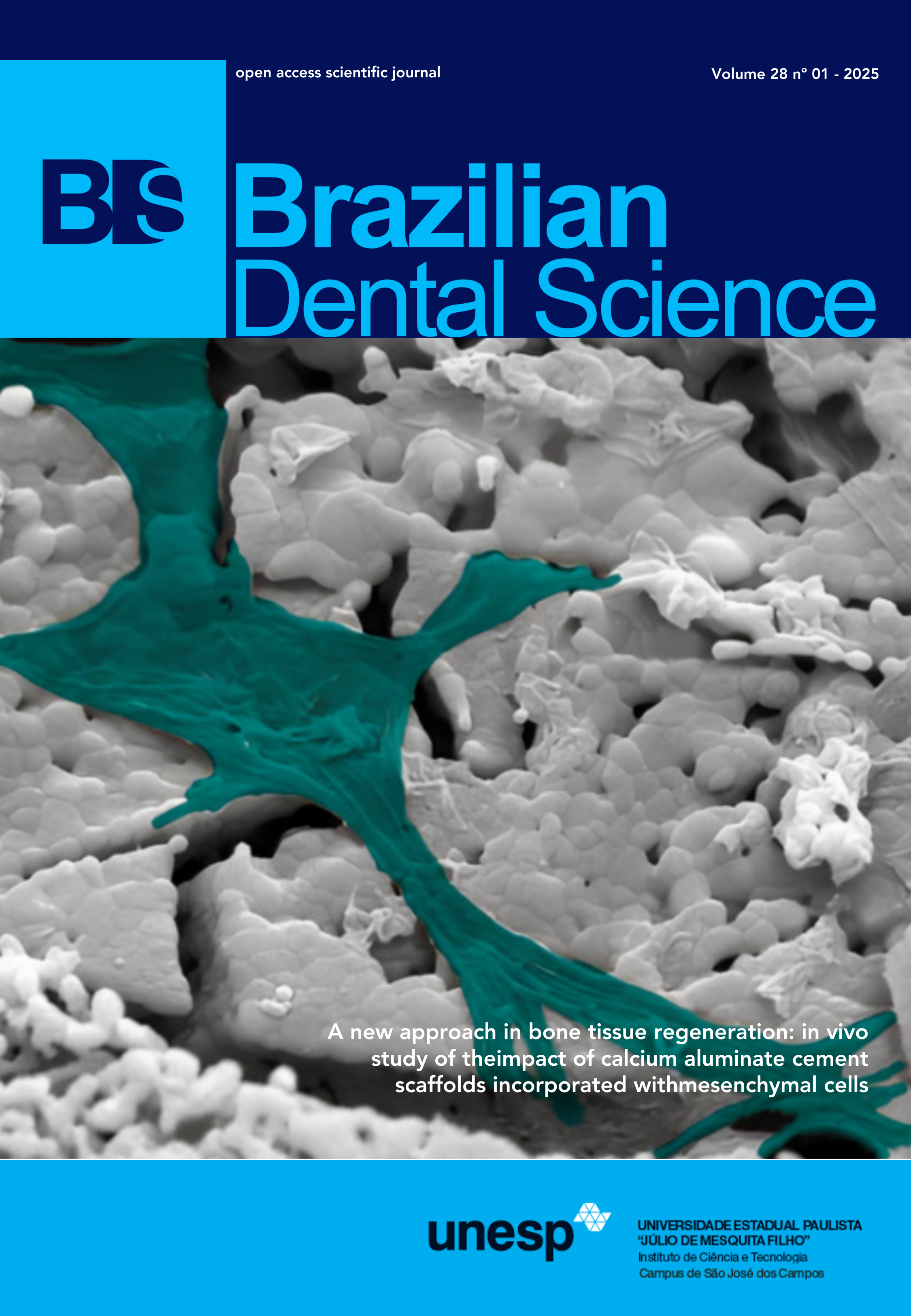Reprodutibilidade do laser Diagnodent‚ na avaliação do conteúdo mineral da dentina
DOI:
https://doi.org/10.14295/bds.2003.v6i3.620Resumen
A inexistência de um método capaz de diagnosticar tão bem a doença (sensibilidade) quanto a higidez (especificidade) no que se refere à cárie dentária, levou ao desenvolvimento de métodos auxiliares de diagnóstico e dentre estes, a fluorescência a laser através do aparelho DIAGNOdent", que tem sido apontado como um método promissor. Nesse sentido, o presente trabalho objetivou avaliar a reprodutibilidade do DIAGNOdent" para a avaliação do conteúdo mineral da dentina, uma vez que usualmente o mesmo é utilizado em estrutura de esmalte dental. Para tanto, 23 dentes (3os molares) hígidos e extraídos por necessidade cirúrgica foram preparados com broca 245, simulando uma cavidade classe I média na superfície oclusal dos dentes, deixando dentina exposta para avaliação pelo DIAGNOdent" . Para tanto, utilizou-se de forma mascarada a sonda B na posição B do referido aparelho, em seis momentos diferentes. O resultado da média dos coeficientes de variação nos seis momentos para cada dente foi de 11,84%, não havendo diferença significativa entre as médias obtidas pelo DIAGNOdent" (p= 0,13). O coeficiente de correlação intraclasse obtido com os valores de DIAGNOdent" foi de 0,98. Conclui-xP, portanto, que a técnica utilizada foi reprodutível e parece ser promissora na avaliação do conteúdo mineral da dentina.Descargas
Descargas
Publicado
Cómo citar
Número
Sección
Licencia
Brazilian Dental Science uses the Creative Commons (CC-BY 4.0) license, thus preserving the integrity of articles in an open access environment. The journal allows the author to retain publishing rights without restrictions.
=================
COPYRIGHT TRANSFER AND RESPONSIBILITY STATEMENT
(PDF)
For all articles published in the BDS journal, copyright is retained by the authors. Articles are licensed under an open-access Creative Commons CC BY 4.0 license, meaning that anyone may download and read the paper for free. In addition, the article may be reused and quoted, provided that the original published version is cited. These conditions allow for maximum use and exposure of the work while ensuring that the authors receive proper credit. All metadata associated with published articles is released under the Creative Commons CC0 Universal Public Domain Dedication.
Before the submission, authors must obtain permission to reproduce any published material (figures, schemes, tables, or any extract of a text) that does not fall into the public domain or for which they do not hold the copyright. Permission should be requested by the authors from the copyright holder (usually the Publisher, please refer to the imprint of the individual publications to identify the copyright holder).
The authors hereby attest that the study is original and does not present manipulated data, fraud, or plagiarism. All names listed made a significant scientific contribution to the study, are aware of the presented data, and agree with the final version of the manuscript. They assume complete responsibility for the ethical aspects of the study.
This text must be printed and signed by all authors. The scanned version should be submitted as supplemental file during the submission process.




